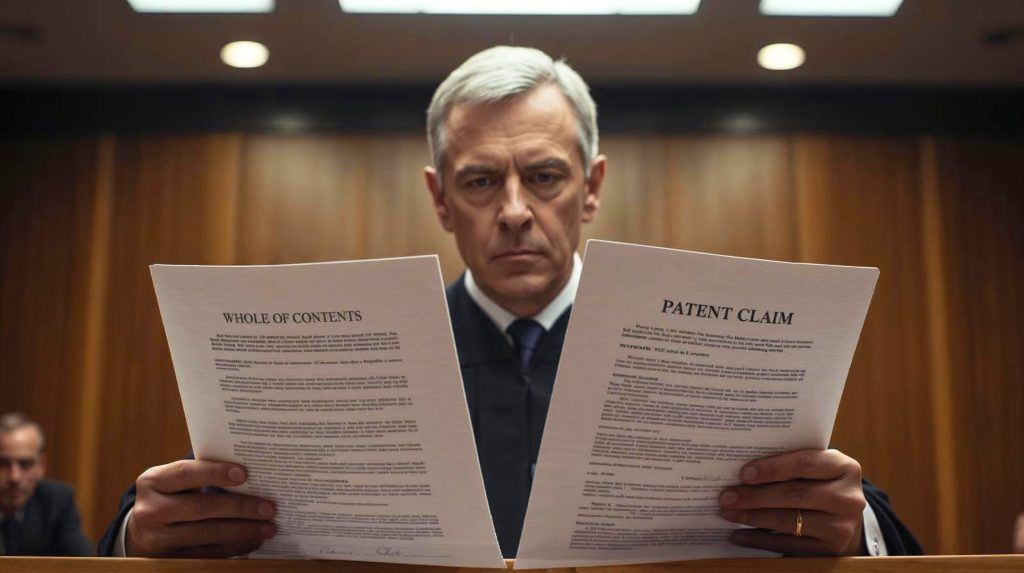As has been widely reported, the High Court of Australia recently handed down its highly anticipated judgment in Calidad Pty Ltd v Seiko Epson Corporation (“Calidad“).
By a majority of 4:3,1 the High Court held that an exhaustion of rights doctrine applies in Australian patent law, displacing the implied licence doctrine that has applied in Australia since the 1911 judgment of the Privy Council in National Phonograph Co of Australia v Menck (“Menck PC”), in which the Privy Council overturned the Australian High Court’s adoption of an exhaustion doctrine in National Phonograph Co of Australia Ltd v Menck (“Menck HC“).
Briefly, the case related to genuine, used printer cartridges, which had been modified in various ways and refilled with ink so they could be reused. Seiko Epson Corporation (“Seiko“) manufactures and sells printers and printer ink cartridges (the “original Epson cartridges“). The original Epson cartridges embody the inventions claimed in two Seiko patents. The original Epson cartridges are manufactured and sold in a form that permits a single use only. A third party, Ninestar Image (Malaysia) SDN BHD (“Ninestar“), obtains used Seiko cartridges and modifies and refills them so they can be re-used. The appellants (collectively, “Calidad”) buy the modified cartridges from Ninestar and import them into Australia to sell to the public.
Seiko-Epson alleged that the modifications to the cartridges infringed the claims of two of its patents. The infringement proceedings were conducted on the basis that that consideration of claim 1 of one of those patents would suffice. The integers of that claim comprised the following 11 integers: (1) a printing material container adapted to be attached to a printing apparatus; (2) a memory driven by a memory driving voltage; (3) an electronic device; (4) a plurality of terminals; and (5)-(11) the layout of those terminals.
The majority held that none of the alleged acts of infringement were made out since all types of alleged infringing acts constituted repair and did not infringe the patentee’s exclusive right to “manufacture” the claimed invention.
The decisions below
Seiko commenced patent infringement proceeding in the Federal Court of Australia against Calidad. Importantly, Seiko did not allege that any contractual conditions were imposed at the time of sale to the original purchasers which restricted the use to which the original Epson cartridges could be put.
Both the trial judge, Burley J, and the Full Court on appeal were bound to follow the decision of the Privy Council in Menck PC to the effect that the first owner of patented goods obtained without restrictions on their use, and any person into whose hands the products subsequently come, is entitled to assume that a “full licence” has been given so that they may do with them as they think fit (i.e., the implied licence doctrine).
At first instance, Burley J assigned the modified cartridges into nine categories, based on the different steps undertaken by Ninestar in relation to them. Burley J held that in five of the categories, the modifications were such as to extinguish any implied licence. However, Burley J considered that modification made to cartridge in the remaining four categories were not material and did not extinguish the implied licence.
On appeal, the Full Court of the Federal Court allowed Seiko’s cross-appeal and dismissed Calidad’s appeal. The Full Court held that none of the nine categories of changes to the original Epson cartridges were authorised by the implied licence, and that the modifications made to cartridges constituted the making of a new embodiment of the invention claimed in the patents.
Calidad was granted special leave to appeal to the High Court.
Issues before the High Court
The key questions before the High Court were:
- The scope of the patentee’s exclusive statutory rights to exploit an invention which is a product, and whether a patentee’s rights with respect to the sale and use of a particular product should be regarded as exhausted when that product is sold or whether those rights continue. This involved a consideration of the approach taken by the High Court in Menck HC (exhaustion of rights) and that of the Privy Council on appeal in Menck PC (implied licence).
- Assuming that a patentee retains the exclusive right to make a product embodying the essential integers of the invention, whether modification made to a product to enable its re-use amounts to the making of a new product and therefore infringement.
This article focuses on the first question.
Burley J’s judgment at first instance explains clearly the background in which the competing theories of implied licence and exhaustion of rights arises as follows:
“The exclusive right to “use” a product the subject of a patent means that upon sale or resale of a product the patentee will have continuing control of the use. The purchaser of a chattel such as a garden hose or a fishing rod which is the subject of a patent can never consider himself or herself to be entitled to all of the usual incidents of ownership, because the patentee could impose limitations on his or her “use”. However, there is a level of impracticality about this arrangement. It creates a tension between the notion that the purchaser of a chattel is its owner who can deal with it as he or she wishes, and the notion that a patentee can continue to have control over any use to which the chattel may be put after sale.”
The implied licence and exhaustion of rights doctrines are different ways of resolving that tension and, as Burley J put it, giving the “purchaser of the fishing rod untrammelled rights to use it as its owner“.
In a nutshell, under an exhaustion doctrine, on first sale of a patented fishing rod by or with the approval of a patentee, the patentee exhausts all patent rights in the subject matter of its invention in respect of the particular fishing rod sold.
In contrast, under the implied licence doctrine, upon purchase of the patented fishing rod, the purchaser gets an implied licence to use the fishing rod in any manner in which the purchaser desires, unless the patentee imposes conditions at the time of sale which would make it inconsistent to impose such a license.
The High Court Judgment
The High Court held by 4:3 majority that an exhaustion of rights doctrine does apply in Australia.
Policy considerations were of central importance to the reasoning of the majority and the minority. Key to the different views of the majority and minority were:
- Different views of those policy considerations; and
- Different understandings of the nature of the rights of the patentee (i.e., purely negative (in the view of the majority), or negative and positive (in the view of the minority)).
The key considerations leading to the majority’s adoption of the exhaustion doctrine were that, in the majority’s view:
- The exhaustion doctrine is logical, simple, and consistent with the common law principle of respecting chattels and an owner’s right to use them.
- The implied licence doctrine, in contrast, is complicated in its operation and effect. The majority noted that the licence upon which the doctrine is based depends on a fiction. In the majority’s view, the implied licence doctrine fails to provide the certainty required by trade and commerce. Gagler J expressed the view, in his separate judgment, that: “…there is simply no settled understanding of the implied licence doctrine in its application to downstream owners Their position is a riddle, if not a muddle. It is certainly a mess.“
- Exhaustion doctrines have been adopted in other jurisdictions, including the USA and the Court of Justice of the European Union.
- The rights conferred on a patentee by the Australian Patents Act are negative in nature and the doctrine of exhaustion is not inconsistent with that.
- The extrinsic materials to the Patents Act 1990 (Cth) (the “Australian Patents Act“) do not suggest the Act was premised on either the implied licence doctrine or the exhaustion doctrine.
- In light of the small number of cases in which the implied licence doctrine had been applied in Australia, it could not be said that great inconvenience would be caused by the abandonment of that doctrine.
- Ultimately, the Court should not continue to endorse an “unworkable doctrine as to patent rights which cannot be said to be required by the statute which grants them“.
For the minority, policy considerations weighed in favour of retaining the implied licence doctrine because:
- The nature and extent of patent rights has been determined by the implied licence doctrine in Australia and the UK for more than a century.
- Jettisoning the implied licence doctrine would reduce the rights of patentees and the remedies available to them, and that should not occur unless there was a “principled reason” for so doing.
- If patentees were to be stripped of rights, this would be a decision for the legislature, not the courts.
- The relevant legislation in the jurisdictions which have adopted a doctrine of exhaustion (the USA; the EU) is very different to the applicable Australian legislation.
- The implied licence doctrine is consistent with the equitable principle that bona fide purchasers for value without notice take their rights free from prior interests, whereas purchasers with notice of restrictions may take their rights subject to these restrictions.
- When the Australian Patents Act was enacted, it was settled law that the implied licence doctrine applied in Australia and, if parliament had intended to move away from the implied licence doctrine, it would have done so explicitly in the Act.
The minority was firmly of the view that the exclusive rights of the patentee are not merely negative rights, but also a positive grant of rights, conferring on the patentee the ability to impose restrictions upon what use may be made of patented goods after sale.
In theory, the second issue to be considered by the Court, namely, whether the modifications made to the cartridges to enable their re-use amounted to the making of a new product and therefore infringed the relevant claims, should not be affected by whether an implied licence or exhaustion of rights doctrine is applied. However, it is interesting to note that in this case, all judges who applied the implied licence doctrine (Burley J at first instance, the three Full Court judges, and the High Court minority) found that at least some of the categories of modifications constituted manufacture and infringed the relevant claims, whereas the High Court majority, applying an exhaustion doctrine, found that none of the categories of modification infringed. The majority took a narrow view of what constitutes “manufacture”.
New Zealand
The most relevant case in New Zealand is Thomas A Edison Ltd v Stockdale (“Stockdale”), a 1919 decision of the New Zealand Supreme Court (which at that time was equivalent to the current High Court), in which the court, applying Menck PC and the 1885 English case of Incandescent Gas Light Co. v Cantelo, held that the patentee was entitled to attach restrictive conditions to the sale of its patented goods and that, having acquired the goods with knowledge of these conditions, the defendant was bound by them, even if the articles had been bought second-hand from a person other than the plaintiff. By implication, if no restrictive conditions were imposed by the patentee, resale would not infringe the patent.
If this issue were to be tested in a New Zealand court, similar (competing) policy considerations to those which influenced the High Court majority and minority in Calidad would appear to be relevant. For example, based on the 1919 Stockdale decision, it could be argued that it has been understood for more than a hundred years that the implied licence doctrine applies in New Zealand. However, it would also be true to say that this has been a relatively obscure issue. Arguably, no great inconvenience would be caused by the abandonment of that doctrine. The Explanatory Note in relation to the Bill which became the Patents Act 2013 is silent on the issue.
However, in New Zealand, this issue is likely to be resolved by the legislature.
In May 2019, the Ministry of Innovation & Employment (“MIE“) released a Discussion Paper, seeking submissions on various issues in relation to intellectual property laws, including whether the Patents Act 2013 (the “NZ Patents Act“) should be amended to provide for domestic and/or international exhaustion of patent rights. The Copyright Act 1994 and the Trade Marks Act 2002 already explicitly provide for exhaustion of rights.
A review of the submissions received indicates that submitters were generally in favour of amending the NZ Patents Act to provide for international exhaustion. After reviewing the submissions, MBIE provided a recommendation to Cabinet regarding amendment of New Zealand’s intellectual property laws. MBIE’s recommendations included a recommendation that the NZ Patents Act be amended to provide for international exhaustion of patent rights. Cabinet agreed to these recommendations in June 2020. A draft Bill is currently in progress and MBIE anticipates that an exposure draft of the Bill will be available for public comment by March or April 2021.
There are arguments both ways as to whether the adoption of an exhaustion of patent rights doctrine is a good step for New Zealand. The exhaustion doctrine has the advantage of being easier to understand and apply, and could have positive practical effects for a net importer of patented products such as New Zealand. However, the doctrine of exhaustion is an additional limit on the rights of patentees and the remedies available to them. It is also a doctrine transposed from the quite different statutory regimes in the USA and Europe.
In any event, in light of the fact that the New Zealand courts rarely have an opportunity to determine patent disputes, it is beneficial that the issue of the applicable doctrine in New Zealand be clarified by the legislature.
A separate and important issue for New Zealand patentees is whether the New Zealand courts will follow the relatively narrow understanding of what constitutes “making” that was adopted by the High Court in Calidad. That approach constitutes a further, significant limit on the rights of patentees in Australia. This issue will be the subject of a future article.
- Joint judgment of Kiefel CJ, Bell and Keane JJ, with whom Gageler J agreed; dissenting judgment of Nettle, Gordon and Edelman JJ.










